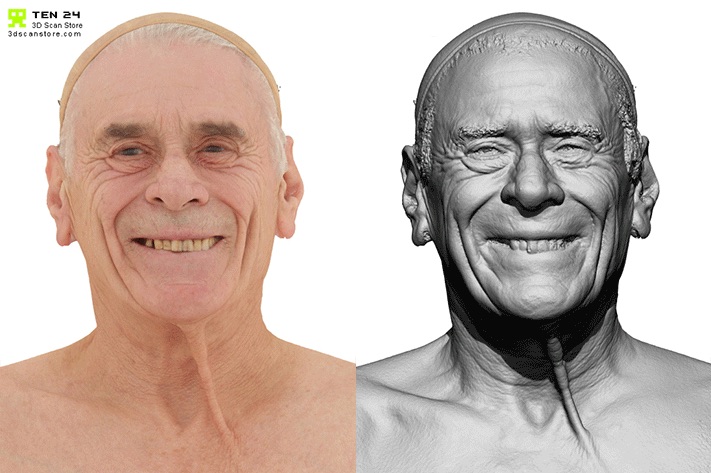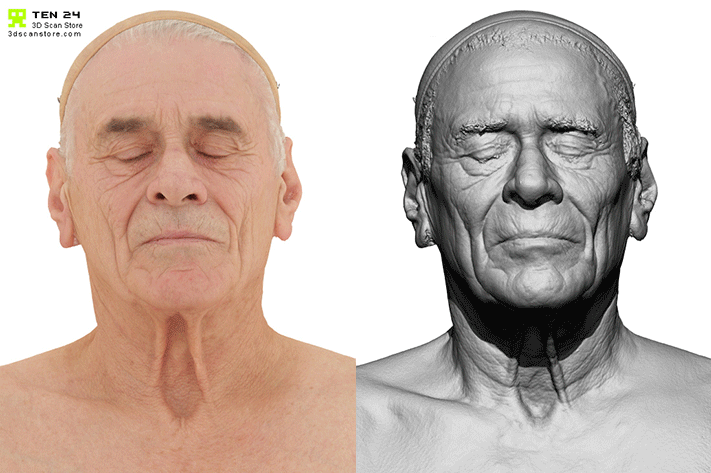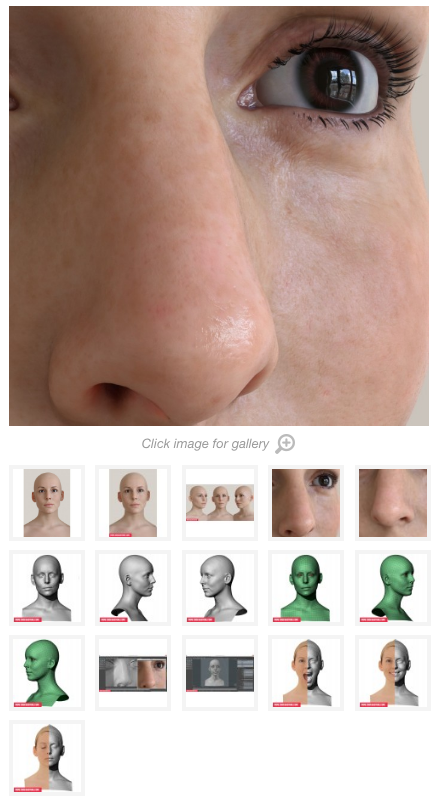
3D models of humans are incredibly useful for designing wearable products, ergonomic studies, and in-situ renders.
The best-looking human scans we’ve used are from 3DScanStore by Ten24, and they’re surprisingly affordable.
It’s almost impossible to design a pair of wraparound sunglasses without a realistic human head as a starting point. Traditionally we did that kind of thing using carefully sculpted anatomical mannequin heads, then trying out the models on our own faces or those of human models. That kind of thing works well if you’re sculpting a design out of urethane foam, RenShape, or plasticine, but it works less well when the bulk of the design work is digital.

25 years ago Rapid Prototyping (or the vulgar “3D Printing”) made things a lot easier, but never quite as fluid or intuitive as the purely-analog sculpt. We could import 2D photos and sketches into our CAD apps for visual reference, build our digital model, then spit out a prototype overnight. Once in the physical realm, we were then free to drop the resulting model onto that old mannequin head or try it on for size. Wash, rinse, repeat. The process is tedious and disjointed, but workable.

In recent years I’ve been using an entirely different method. When designing a wearable product–especially a head-mounted one like sunglasses, headphones, or a VR headset–I use a battery of 3D scanned heads. This completes the cycle, bringing the entire design process into the digital realm, greatly reducing the number of prototypes built for a given project. Yes, we still need physical prototypes, but we make fewer dumb mistakes when designing to a realistic human baseline.
Decent scans used to be hard to come by. No longer.
These days I use 3DScanStore. Not only can I get fully detailed photometric scans of human faces, bodies, hands, and clothing, but even fully re-topologized animation-ready meshes. Drop them into MODO and I’m ready to rock.
Read more at SolidSmack.com

